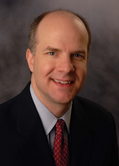Erectile function recovery rate after radical prostatectomy: A meta-analysis Journal Article
| Authors: | Tal, R.; Alphs, H. H.; Krebs, P.; Nelson, C. J.; Mulhall, J. P. |
| Article Title: | Erectile function recovery rate after radical prostatectomy: A meta-analysis |
| Abstract: | Introduction. Erectile function recovery (EFR) rates after radical prostatectomy (RP) vary greatly based on a number of factors, such as erectile dysfunction (ED) definition, data acquisition means, time-point postsurgery, and population studied. Aim. To conduct a meta-analysis of carefully selected reports from the available literature to define the EFR rate post-RP. Main Outcome Measures. EFR rate after RP. Methods. An EMBASE and MEDLINE search was conducted for the time range 1985-2007. Articles were assessed blindly by strict inclusion criteria: report of EFR data post-RP, study population ≥ 50 patients, ≥ 1 year follow-up, nerve-sparing status declared, no presurgery ED, and no other prostate cancer therapy. Meta-analysis was conducted to determine the EFR rate and relative risks (RR) for dichotomous subgroups. Results. A total of 212 relevant studies were identified; only 22 (10%) met the inclusion criteria and were analyzed (9,965 RPs, EFR data: 4,983 subjects). Mean study population size: 226.5, standard deviation = 384.1 (range: 17-1,834). Overall EFR rate was 58%. Single center series publications (k = 19) reported a higher EFR rate compared with multicenter series publications (k = 3): 60% vs. 33%, RR = 1.82, P = 0.001. Studies reporting ≥ 18-month follow-up (k = 10) reported higher EFR rate vs. studies with <18-month follow-up (k = 12), 60% vs. 56%, RR = 1.07, P = 0.02. Open RP (k = 16) and laparoscopic RP (k = 4) had similar EFR (57% vs. 58%), while robot-assisted RP resulted in a higher EFR rate (k = 2), 73% compared with these other approaches, P = 0.001. Patients <60 years old had a higher EFR rate vs. patients ≥ 60 years, 77% vs. 61%, RR = 1.26, P = 0.001. Conclusions. These data indicate that most of the published literature does not meet strict criteria for reporting post-RP EFR. Single and multiple surgeon series have comparable EFR rates, but single center studies have a higher EFR. Younger men have higher EFR and no significant difference in EFR between ORP and LRP is evident. © 2009 International Society for Sexual Medicine. |
| Keywords: | aged; middle aged; clinical trial; postoperative period; laparoscopy; risk factors; surgical approach; risk factor; risk; prostate cancer; postoperative complications; prostatectomy; radical prostatectomy; medline; robotics; erectile dysfunction; convalescence; sexual function; penile erection; meta analysis; penis erection; impotence, vasculogenic; erectile function; meta-analysis; embase; factors affecting erection recovery rate |
| Journal Title: | Journal of Sexual Medicine |
| Volume: | 6 |
| Issue: | 9 |
| ISSN: | 1743-6095 |
| Publisher: | Elsevier Inc. |
| Date Published: | 2009-09-01 |
| Start Page: | 2538 |
| End Page: | 2546 |
| Language: | English |
| DOI: | 10.1111/j.1743-6109.2009.01351.x |
| PUBMED: | 19515209 |
| PROVIDER: | scopus |
| PMCID: | PMC4097184 |
| DOI/URL: | |
| Notes: | --- - "Cited By (since 1996): 13" - "Export Date: 30 November 2010" - "Source: Scopus" |
Altmetric
Citation Impact
BMJ Impact Analytics
Related MSK Work






